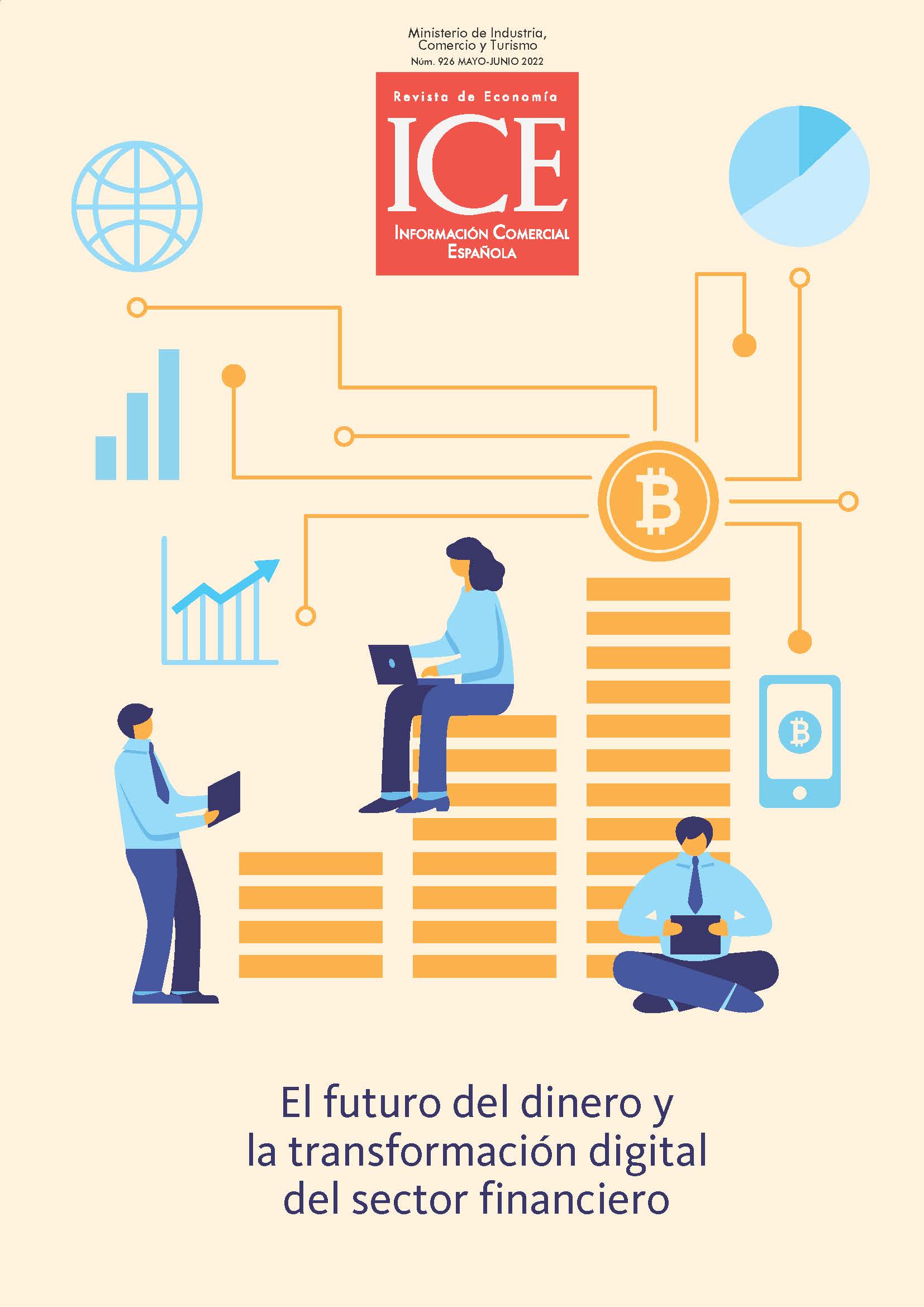La irrupción de las stablecoins: evolución, riesgos y marco regulatorio
##plugins.themes.bootstrap3.article.sidebar##
Descargas
##plugins.themes.bootstrap3.article.main##
Las stablecoins han experimentado un notable crecimiento en los últimos años. Este artículo examina las principales características de esta tipología de criptoactivos, las implicaciones para la estabilidad financiera y para la economía real de su adopción masiva y la respuesta regulatoria a dicho fenómeno. El presente artículo pone de manifiesto cómo las stablecoins, aunque son menos volátiles que el resto de los criptoactivos, están sujetas a una cierta inestabilidad en períodos de elevada volatilidad en los criptomercados. Además, se evidencia cómo el auge de las stablecoins podría generar riesgos para el inversor y la estabilidad financiera, ante los cuales se está construyendo una respuesta regulatoria y supervisora adecuada a nivel global, europeo y nacional.
##plugins.themes.bootstrap3.article.details##
Arner, D. W., Auer, R., & Frost, J. (2020). Stablecoins: risks, potential and regulation (BIS Working Papers No. 905). Bank for International Settlements.
Banco de España. (2022). Informe de estabilidad financiera. Primavera.
Barthelemy, J., Gardin, P., & Nguyen, B. (2021). Stablecoins and the real economy. SSRN Electronic Journal.
Baur, D. G., Dimpfl, T., & Kuck, K. (2018). Bitcoin, gold and the US dollar – A replication and extension. Finance Research Letters, 25, 103-110.
Baur, D. G., & Hoang, L. T. (2021). A crypto safe haven against Bitcoin. Finance Research Letters, 38, 101431.
BCE, Banco Central Europeo. (2020). Stablecoins: Implications for monetary policy, financial stability, market infrastructure and payments, and banking supervision in the euro area (Occasional Paper Series No. 247).
BCE, Banco Central Europeo. (2021). Financial Stability Review. November.
Bellia, M., & Schich, S. (2020). What makes private stablecoins stable? SSRN Electronic Journal.
Berentsen, A., & Schär, F. (2019). Stablecoins: The quest for a low-volatility cryptocurrency. In A. Fatás (Ed.), The Economics of Fintech and Digital Currencies (pp. 65-71). Centre for Economic Policy Research.
BIP, Banco Internacional de Pagos. (2019). Investigating the impact of global stablecoins. G7 Working Group on Stablecoins. October.
BIP, Banco Internacional de Pagos. (2021). DeFi Risks and the Decentralization Illusion. BIS Quarterly Review. December.
Bullmann, D., Klemm, J., & Pinna, A. (2019). In Search for Stability in Crypto-assets: Are Stablecoins the Solution? (ECB Occasional Paper Series No. 230). European Central Bank.
Carrascosa, A. y García Montalvo, J. (2021). Monedas digitales: ¿Cuál debe ser el papel de los bancos centrales? Papeles de Economía Española, 170, 43-61.
CEF, Consejo de Estabilidad Financiera. (2020). Regulation, Supervision and Oversight of “Global Stablecoin” Arrangements. October.
Chainalysis. (2022). The 2022 Crypto Crime Report.
Chohan, U. W. (2020). Are Stable Coins Stable? (Discussion Paper Series: Notes on the 21st Century (CBRi)).
Comité de Basilea de Supervisión Bancaria. (2021). Prudential treatment of cryptoasset exposures. Documento de consulta.
CNBC. (2021, 8 de diciembre). Coinbase customers demand refunds over GYEN stablecoin glitch. https://www.cnbc.com/2021/12/08/coinbase-customers-demand-refunds-over-gyen-stablecoin-glitch.html
CPMI-IOSCO, Committee on Payments and Market Infrastructures-International Organization of Securities Commissions. (2021). Application of the Principles for Financial Market Infraestructures to stablecoin arrengements. Informe de consulta.
Eichengreen, B. (2019). From commodity to fiat and now to crypto: What does history tell us? (NBER Working Paper No. 25426). National Bureau of Economic Research.
Financial Times. (2022, 17 de enero). Spain leads European crackdown on crypto promotions. https://www.ft.com/content/a119dc9e-189d-4a87-ae02-a81a37260196
FMI, Fondo Monetario Internacional. (2021). The Crypto Ecosystem and Financial Stability Challenges. In Global Financial Stability Report. Covid-19, Crypto, and Climate: Navigating Challenging Transitions (pp. 41-58). October.
Grobys, K., Junttila, J., Kolari, J. W., & Sapkota, N. (2021). On the stability of stablecoins. Journal of Empirical Finance, 64, 207-223. (August).
Grupo de Acción Financiera Internacional. (2014). Virtual Currencies Key Definitions and Potential AML/CFT Risks. FATF Report June.
IOSCO, International Organization of Securities Commissions. (2022). Decentralized Finance Report.
Jarno, K., & Ko?odziejczyk, H. (2021). Does the Design of Stablecoins Impact Their Volatility? Journal of Risk and Financial Management, 14(2), 42.
Kozhan, R., & Viswanath-Natraj, G. (2021). Decentralized Stablecoins and Collateral Risk. SSRN Electronic Journal.
Kristoufek, L. (2021). Tethered, or Untethered? On the interplay between stablecoins and major cryptoassets. Finance Research Letters, 43, 101991.
Kwon, Y., Kim, J., Kim, Y., & Song, D. (2021). The Trilemma of Stablecoin. SSRN Electronic Journal.
Liao, G. Y., & Caramichael, J. (2022). Stablecoins: Growth Potential and Impact on Banking (International Finance Discussion Paper No. 1334).
Lyons, R. K., & Viswanath-Natraj, G. (2020). What Keeps Stablecoins Stable? (NBER Working Paper No. 27136). National Bureau of Economic Research.
Nguyen, T. V. H., Nguyen, T. V. H., Nguyen, T. C., Pham, T. T. A., & Nguyen, Q. M. P. (2022). Stablecoins versus traditional cryptocurrencies in response to interbank rates. Finance Research Letters, 47(B), 102744.
Sidorenko, E. L. (2020). Stablecoin as a New Financial Instrument. In S. Ashmarina, M. Vochozca, & V. Mantulenko (Eds.), Digital Age: Chances, Challenges, and future, 84 (pp. 630- 638). Springer International Publishing.
Thanh, B. N., Hong, T. N. V., Pham, H., Cong, T. N., & Anh, T. P. T. (2022). Are the stabilities of stablecoins connected? Journal of Industrial and Business Economics, 1-11.


